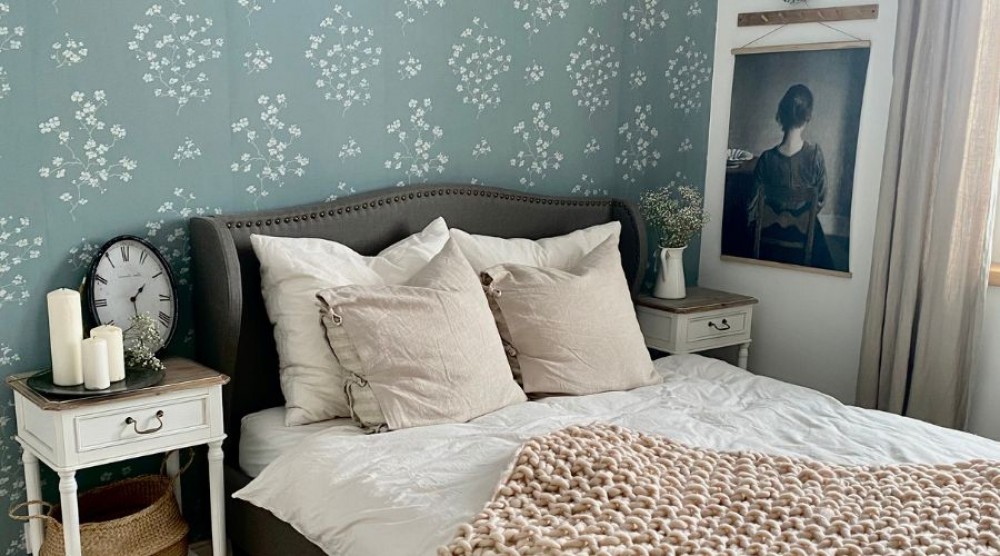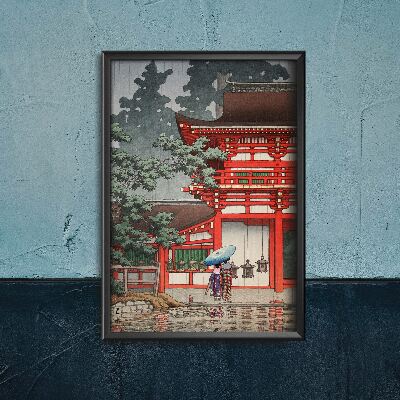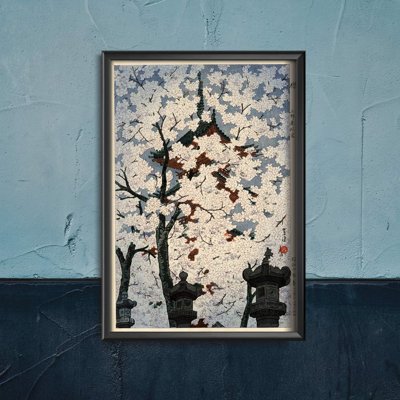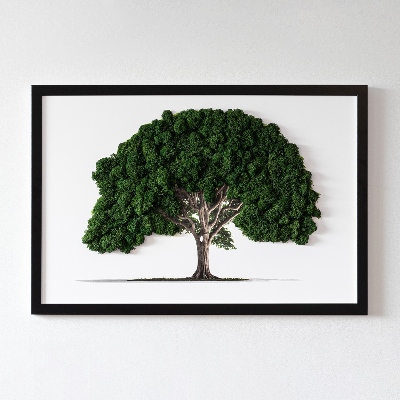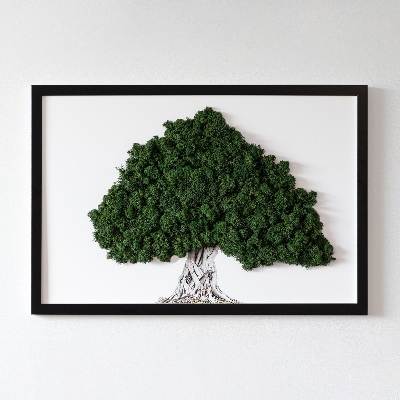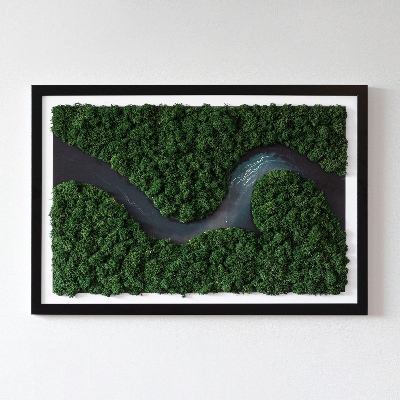- Vintage Posteria
- /
- Blog
- /
- Art

In a world that moves faster and faster, more and more people are seeking peace and harmony in their immediate surroundings. It's no wonder that the Japanese style in interiors is gaining increasing popularity among lovers of simplicity and closeness to nature. If you're wondering how to design an apartment in the Japanese style, get ready for a journey to a land of tranquility, subtle colors, and natural materials.
An interior in the Japanese style combines tradition, Zen philosophy, and a modern approach to space. Its hallmark is Japanese minimalism, which does not mean emptiness but a wisely planned arrangement. In traditional Japanese homes, you won't find an excess of decorations or massive furniture.
In this article, you'll discover the secrets of designing interiors inspired by the Land of the Rising Sun and learn how to use elements like wallpapers, canvas prints, moss decorations, mirrors, or ceramic vases to bring the spirit of Japan into your home.
Natural materials and a calm color palette – the foundation of Japanese style
The Japanese style in interior design is based on what is natural, durable, and timeless. The main role here is played by materials derived from nature, such as wood, bamboo, linen, cotton, or stone. From these, simple furniture, original bamboo mats, or bamboo flooring are crafted, perfectly fitting into the philosophy of feng shui.
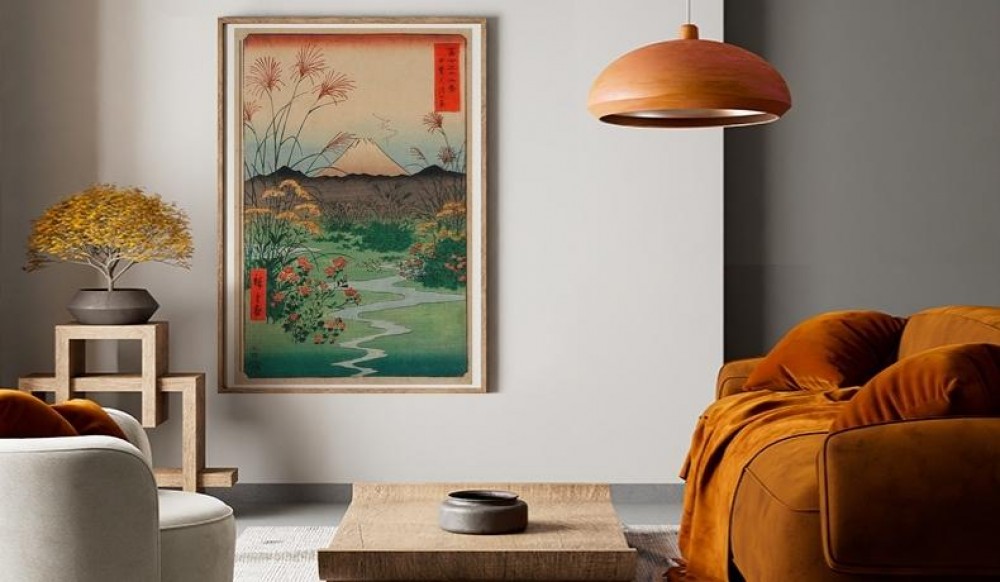
The color palette dominating Japanese interiors primarily includes earth tones – beiges, grays, warm whites, olive greens, and browns. This monochromatic decor allows you to relax, calm down, and detach from everyday chaos. The naturalness of Japanese interiors is also expressed in textures – the roughness of linen fabric, the smoothness of lacquered wood, the slightly coarse texture of rice paper.
It's worth mentioning that large windows are an essential feature of Japanese homes, letting in as much natural light as possible, along with open spaces that encourage free energy flow. If you have a small space, you can take inspiration from one of the world's most densely populated countries, where saving space is combined with extraordinary functionality.
In modern interior projects, it's also worth incorporating wall decorations, such as subtle wallpapers with bamboo motifs, posters with Japanese landscapes, or moss art, which symbolize closeness to nature and bring freshness to the space.
Less is more – minimalism in Japanese style
Japanese minimalism is not just an aesthetic – it's a lifestyle approach that assumes the surroundings should support inner peace rather than distract. Japanese designs follow the principle of "less but better," which is why it's so important to limit the number of furniture and decorations.
In practice, this means avoiding bulky items in favor of low furniture – low beds, low coffee tables, simple shelves, or cabinets with sliding doors inspired by traditional Japanese style. Storage becomes smart and discreet, with every item having its place.
It's also important to pay attention to how we decorate the space. In Japanese style, it's not about leaving walls empty but ensuring every detail is thoughtful. Great choices include wooden-framed mirrors that reflect light and visually expand the space, as well as canvas prints with Japanese motifs, such as cherry blossom branches, mountains, or waterfalls.
A Japanese-style apartment lets you breathe – both literally and figuratively. It's a space dominated by silence, harmony, and the opportunity to be present in the moment.
Light, space, and mirrors – optics in the service of Zen
In Japanese style, light plays a crucial role – preferably natural light streaming through large windows, which are an essential feature of Japanese homes. Interiors designed in the spirit of Zen style should be bright, airy, and open to support energy flow and positively impact the mood of the residents.
If large windows aren't an option, consider using mirrors that align with a nature-inspired aesthetic. Placed opposite windows, they will reflect light and enlarge the space.

Equally important is soft lighting – rice paper lamps, lanterns, or simple hanging fixtures with soft, warm light are ideal for a Japanese-style living room or bedroom design. Lighting should be discreet, conducive to relaxation and contemplation, in line with Zen philosophy.
Don't forget the role of space – open layouts are managed with care here. Instead of dividing rooms into small zones, it's better to opt for flexibility and mobile solutions like Japanese screens, which can be moved as needed.
Nature-inspired decorations – moss, flowers, and the spirit of Japan
In Japanese interior design, nature is not just an inspiration – it defines these arrangements. Every element that brings us closer to the natural world is welcome: from live plants to textures referencing stones, water, or wood.
In modern designs, it's worth utilizing moss decorations, which perfectly embody the naturalness of Japanese interiors. Green panels or art bring freshness and symbolism of life into the home. Bonsai trees play a similar role, holding an important place in traditional Japanese homes for centuries – symbolizing patience, humility, and inner growth.
Equally significant are ceramic vases, preferably hand-decorated, which can be placed on a low coffee table or the floor next to a tatami mat. In Japanese culture, they are used to store water or flowers and often play a role in tea ceremony preparations.
A space for relaxation – the contemporary tatami zone
One of the most characteristic elements of Japanese interiors is a space dedicated to relaxation – a place to meditate, drink tea, or simply enjoy the silence.
Traditionally, this role was fulfilled by the tatami zone, a designated area with rice straw mats. Today, to design a Japanese-style room, you don't need to import tatami from Japan – you can use original bamboo mats that capture the character of the interior while being practical and durable.
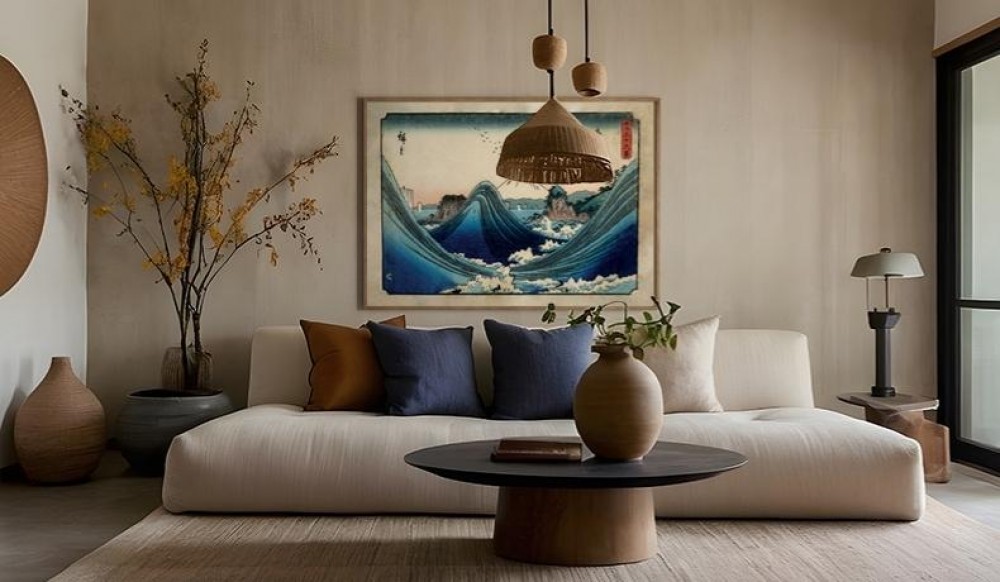
This zone also includes a low coffee table essential for celebrating traditional tea ceremonies or simply relaxing with a book. For seating, cotton futon mattresses or round cushions in natural colors work best.
In modern interiors designed in the Japanese style, relaxation furniture inspired by traditional Japanese homes is increasingly popular but adapted to European standards – featuring simple forms, low profiles, and materials like wood, linen, or bamboo.
The art of living in harmony with space
Japanese style is more than an aesthetic – it's a way of thinking about space, daily life, and our relationship with nature. When designing a home in the Japanese style, you invite peace, conscious choices, and beauty rooted in simplicity into your life. In a world full of haste and excess, Japanese interior design reminds us that true value lies in what is thoughtful, natural, and authentic. If you long for a space where you can truly unwind – a Japanese-style home might be your answer.
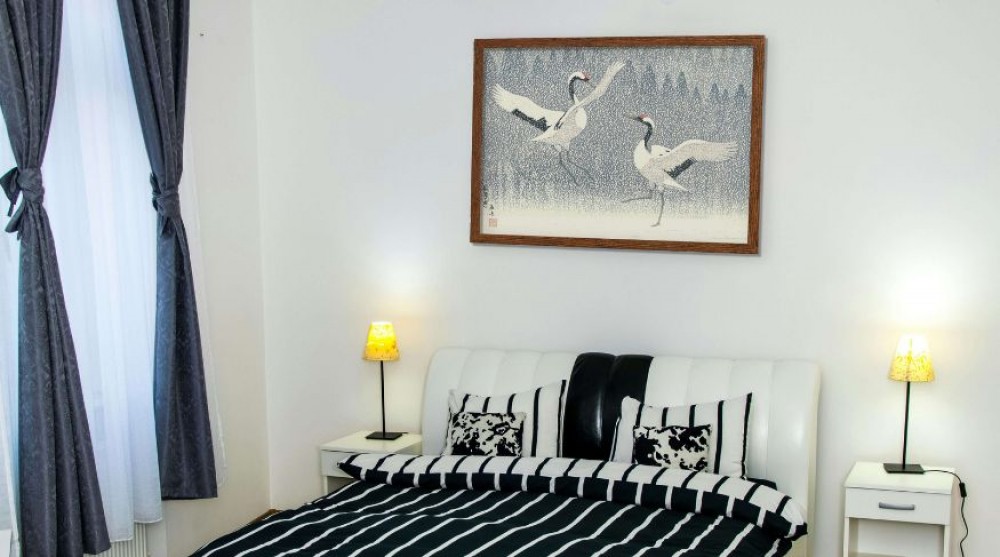
Bedroom in vintage style - how to create a space with soul?

What to put on walls in a hallway?
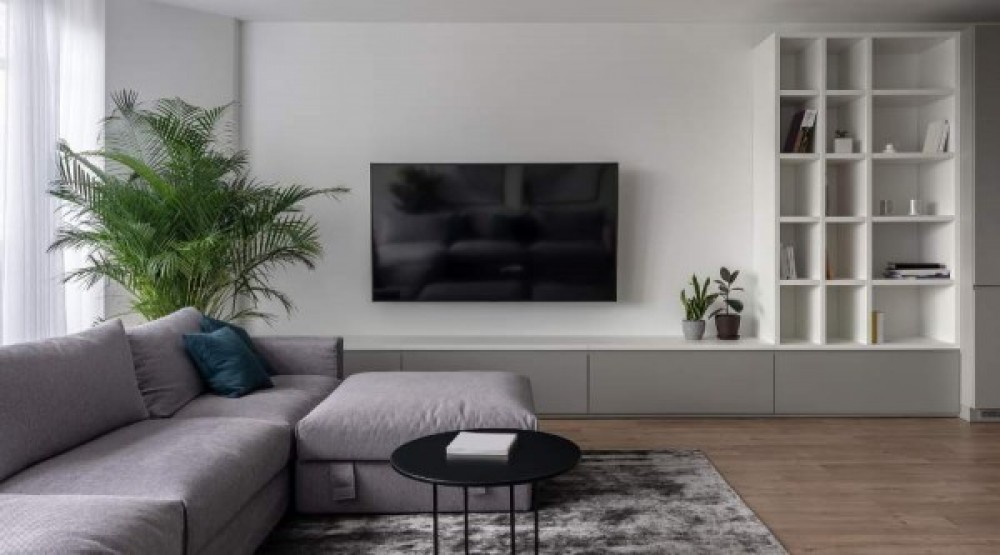
TV wall decoration - ideas for aesthetic space arrangements
